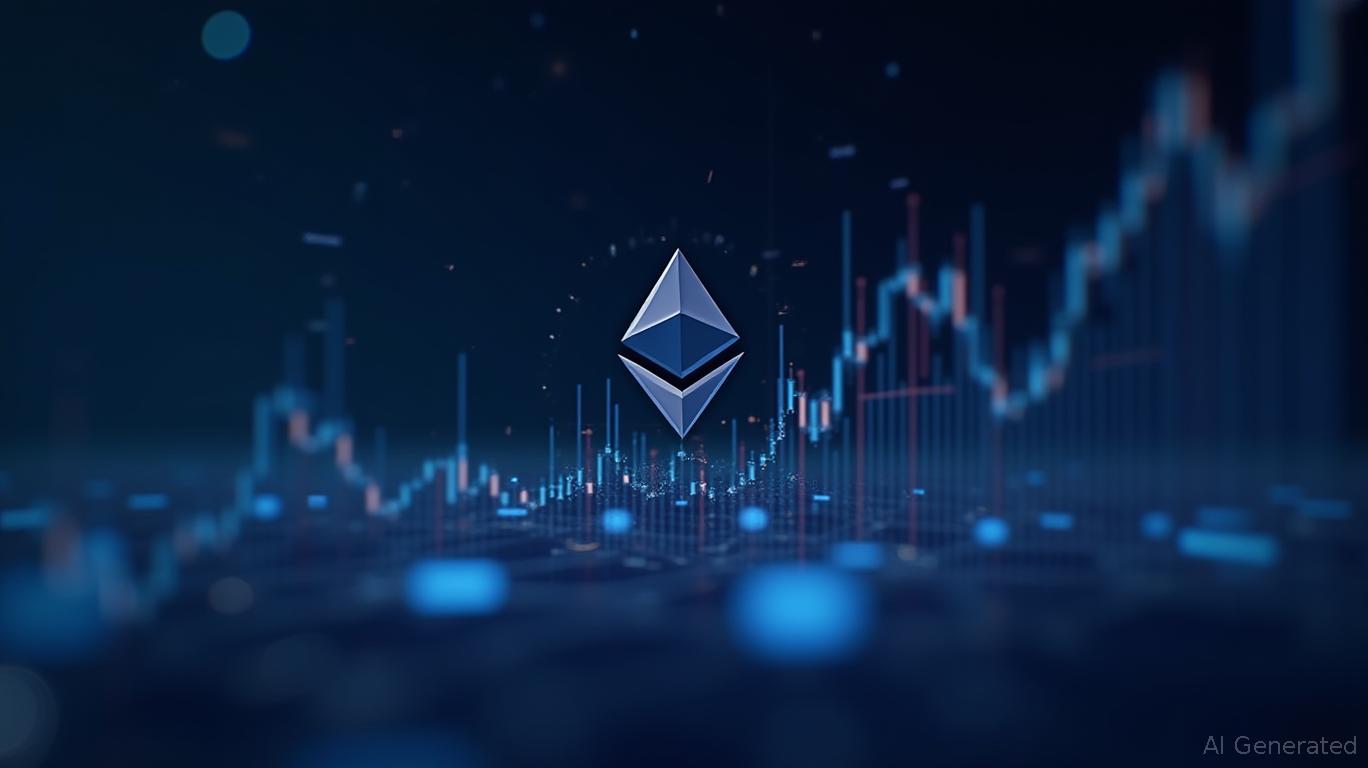AInvest Newsletter
Daily stocks & crypto headlines, free to your inbox
Ethereum's latest price was $2526.36, down 4.327% in the last 24 hours. Ethereum's network fundamentals have shown improvement, with a notable increase in layer-2 transactions highlighting the growth of its ecosystem. Ethereum continues to dominate the total value locked (TVL) landscape, securing a 54.2% market share. Leading Ethereum layer-2 solutions have further bolstered this position by capturing an additional 6.3% of the TVL, thereby reducing competitive pressure from alternative blockchains. The combined deposits within the Ethereum ecosystem are more than four times greater than those of its two largest rivals, Solana and BNB Chain.
Despite Ethereum's dominance, critics argue that the network was unprepared for the memecoin frenzy that characterized the first quarter of 2025. This frenzy was particularly evident on the Solana network, where onchain activity spiked after the launch of the Official Trump (TRUMP) token in January. While a few Solana DApps experienced strong momentum, the overall benefit for SOL holders remains uncertain. For instance, the top four Solana DApps—Meteora, Pump, Jito, and Axiom—generated $356.3 million in fees over the past 30 days. However, the Solana network itself collected only $48.5 million during the same period, creating downward pressure on SOL’s value as several of these projects regularly sell off treasury reserves.
In contrast, the top four DApps on Ethereum generated $169 million in fees over the same 30-day period, while users paid $38.3 million in network processing fees. This suggests that Ethereum’s dependence on layer-2 scaling solutions may be more favorable for ETH investors compared to Solana’s uneven revenue distribution. Ethereum's layer-2 ecosystem is now processing over 15 times more transactions than the base layer, indicating significant growth and scalability.
Ethereum's Pectra hard fork, initiated via the Ethereum Improvement Proposal 7691 (EIP-7691) on May 7, has doubled the default blob count from three to six and lifted the ceiling from six to nine. Blobs are data pieces included in Ethereum blocks. The update has been operating within the thresholds analysts forecast, according to a report by ethPandaOps on May 30. The report instrumented 123 Beacon-chain nodes across 27 countries, 29 in controlled data centers, and 94 in residential settings to track the “New Head” event, which is a timestamp recorded when a client declares a
and its blobs the new chain tip. The benchmark requires 66% of peers to reach New Head within four seconds, or the block risks being orphaned.Charts covering 50,025 slots through May 28 show home-user nodes accepted locally built solo-staker blocks in under four seconds 99.5% of the time, with only a handful of outliers. Regression across block size and arrival time projects that home nodes could tolerate up to 14 blobs before brushing the deadline, well above the nine-blob cap. The report concluded that “home users were able to support nine blobs,” validating pre-fork modeling that assumed bandwidth sensitivity at the network edge. The report then stress-tested the model against a 60 million-gas worst-case block size, reflecting the upper bound under Pectra. The same regression trimmed safe capacity to 10 blobs, leaving a narrow margin but still clearing the live 6/9 envelope.
About 91% of main-chain blocks route through MEV-Boost relays, which insert a bid-acceptance round-trip between proposers and builders. Relay-sourced blocks reached New Head marginally slower, with home nodes registering 97.1% inside four seconds versus 99.5% for locally built blocks. The report noted that a higher gas cap would further tighten the window, reinforcing community calls to halt future gas limit increases until peer-to-peer data availability sampling (PeerDAS) ships in the subsequent Fusaka release.

Daily hot coin scoop, fast and explosive!

Dec.12 2025

Dec.12 2025

Dec.12 2025

Dec.12 2025

Dec.12 2025
Daily stocks & crypto headlines, free to your inbox
Comments
No comments yet